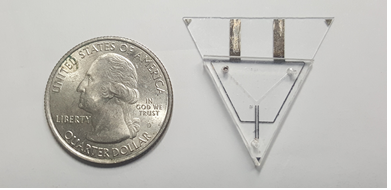Development of Microfluidic Microbial Fuel Cells
Microfluidic fuel cells have been widely researched over the past decade to achieve significantly higher power densities. These fuel cells are ideally implemented in arrays where they can provide higher electrical power than comparable macroscale counterparts. Additionally, microscale flows are predominantly laminar in nature, facilitating an easy separation of the anolyte and catholyte without any additional membrane requirements.
In the MEMS lab at Hanyang, we developed microfluidic microbial fuel cells that can generate electrical power from a variety of organic matter and simultaneously aid in the purification of wastewater. The performance of the bacterial strain in producing electrons is optimal under a specific shear stress and several studies have expressed the dependance of biofilm structure on prevalent flow conditions. During my time at Hanyang, I performed microfluidic simulations in ANSYS Fluent to study the effect of varying flow conditions on the shear stress at the anode and on the performance of the fuel cell.
Computational results of the optimal flow conditions helped in achieving an experimental improvement of 12.5 % in maximum power density compared to conventional membrane based designs. More details on the simulations can be found in a report I made at the end of my experience. This report was written after my sophomore year and is far from being considered as a good example of my technical writing, but the intent was to convey my passion for CFD with proper methodological description of my work.
